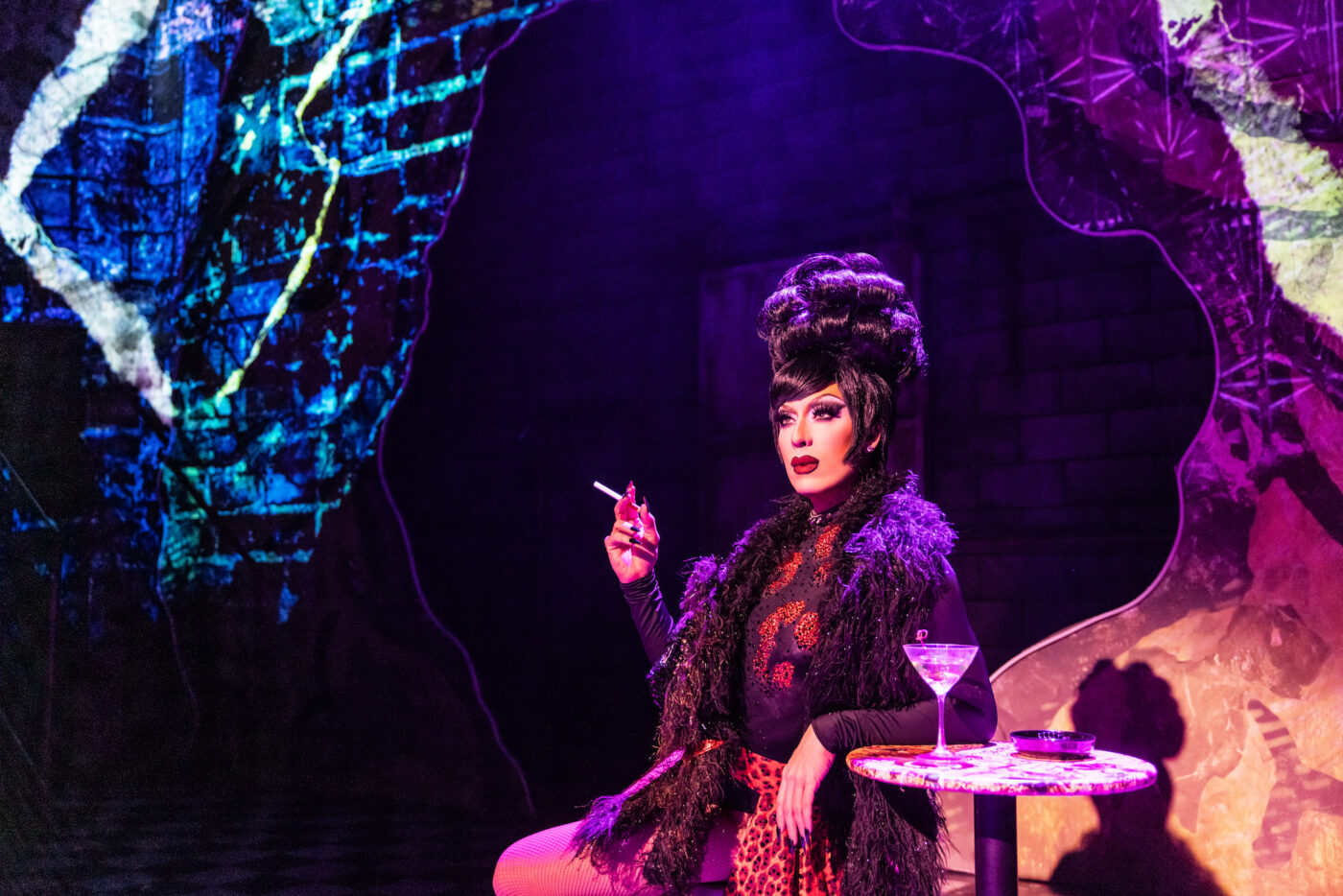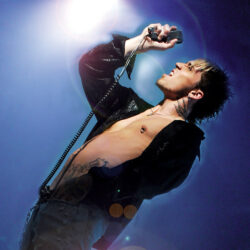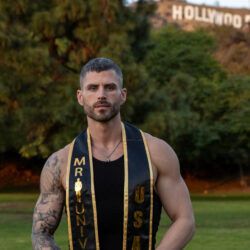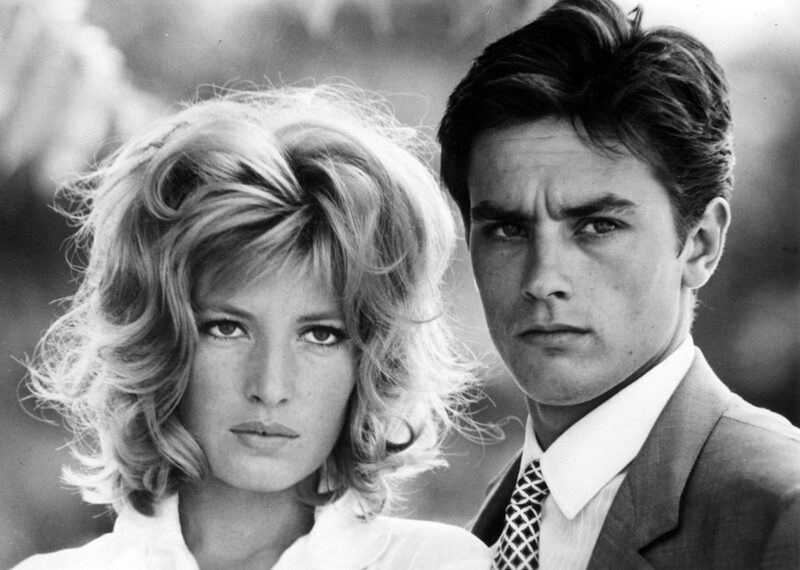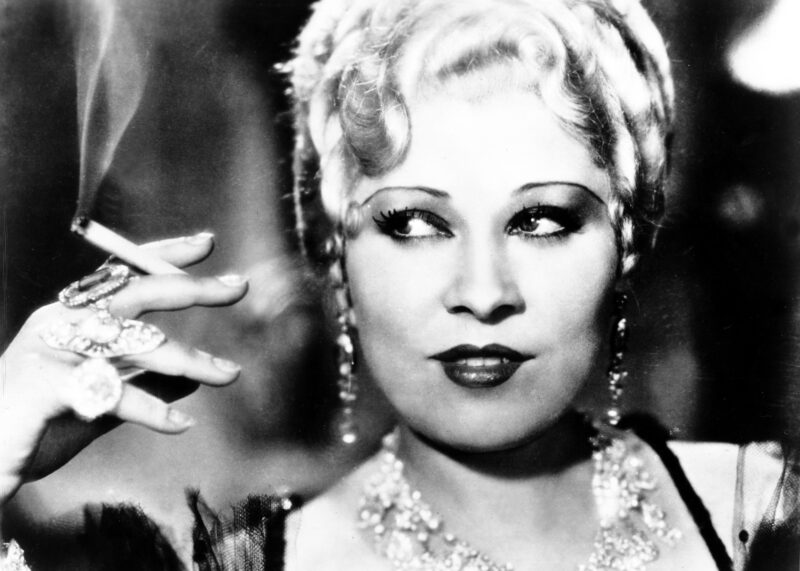Icy. Cold. Breathtaking. Welcome to ALASKA – a national drag icon, who shares a few qualities with an American state. On camera, these traits propelled Alaska from reality TV star to co-creator of Drag: The Musical, the award-winning show, co-produced by Liza Minnelli. When I attend the opening night of its second season off Broadway, the audience is as diverse and colorful as the cast. All genders, ages, and races gather in rapt attention punctuated by laughter, tears and flat-out talking to the characters on stage.
As I watch them, I wonder: what is America’s attraction to the art form of drag, and what is it about Alaska that defines it? The long answer is tucked in the annals of time, but the short answer can be found in one singular moment: February 2nd, 2002. That’s when we as a nation witnessed the drag invasion spearheaded by RuPaul’s Drag Race, a crash course in American ballroom culture powered largely by gay males. The then unknown show was produced by Ru and World of Wonder Production and debuted on Bravo, becoming an instant hit. Song, dance, fashion and shady commentary made for a successful recipe.
By season two, audiences were begging for more, and the answer was Alaska! For viewers getting to know the contender from Erie, Pennsylvania, it was love at first confessional! Born Justin Andrew Honard, in and out of drag, his witty takes, dynamic looks and catchphrases like “Hiiiieee” and “Byeee” took the audience by storm and became viral before viral was a thing. Alaska’s personality, and iconic lip sync battles kept her in the competition till the top two. No, she did not win the season, but she won America’s hearts. She returned the love with a tour de force of creative work from albums to movies to tv appearances to podcasts that not only kept up with the times but fed the fandom.
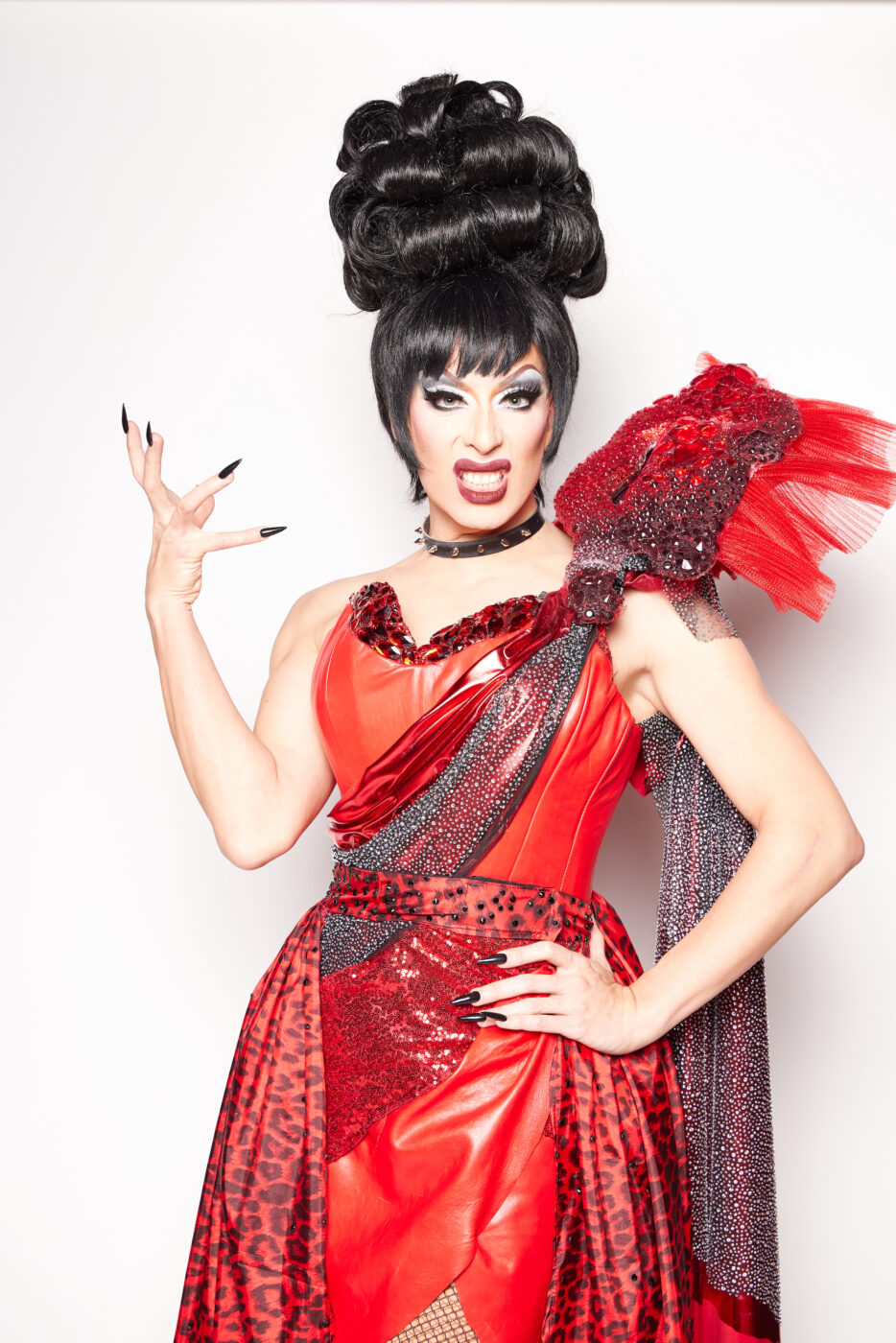
DRAG: The Musical • Photo: Rosenstein.
Yet of all the projects Alaska has birthed, Drag: The Musical may be the most prodigious one to date. “I think this is the longest-term artistic project I’ve ever worked on that has come to fruition…” shares Alaska. For nearly eight years, Alaska and collaborators Tomas Costaza and Ashley Gordon worked to get the play from concept to creation. “Ultimately, we wanted it to be about family and we want it to be about finding out more about yourself through this crazy thing called drag.”
On the surface the play delivers this message through a story about two fiercely competitive Queens of Drag from two competing houses: Kitty, and Alexis. But beneath the surface, it’s a complex look at all of us, and our unique ability to triumph through setbacks and pain. From CIS gendered women to straight men to children, every soul gets a seat in the spotlight; not only to shine, but express their deepest feelings. Financial struggles, family squabbles, death, taxes and more feature in the narrative, creating an emotional yet entertaining rollercoaster.
But it’s not exactly what audiences may have had in mind for a drag themed play starring Alaska.
“We definitely have this sneak attack going for us,” says the entertainer. “People come in and expect to see fabulous clothes and some cunty remarks, and then when [the show] is able to touch your heart a little bit and maybe make you cry, they’re pleasantly surprised to go on that journey.” For Alaska fans some of the journey may feel like winks and nods to his life on and offstage. From the romance between two queens to friction between family, the narrative echoes some moments in Alaska’s real life. But fan or newbie, the experience has the palpable weight of experiences that are universal.
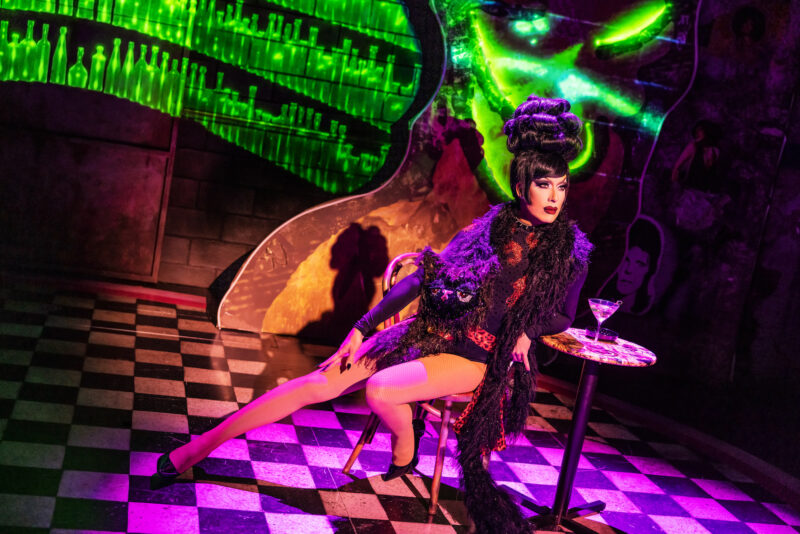
Alaska in ‘DRAG: The Musical’ © Matthew Murphy.
This is powerfully illustrated with the character of Brendan, a young boy who learns to embrace himself and inspires the audience to do the same. “He is ten-years-old and he doesn’t feel understood by his dad or anyone in his life and that’s something I definitely identify with,” says Alaska. “When I was a kid, I really retreated into myself and I was very shy and I was very introverted and my safe space was just being in my bedroom and drawing and writing stories and that was where I felt safe and understood.”
Like Brendan, coming out of that room was fueled by coming to a community that understood.
“It wasn’t until I discovered theater and then beyond that drag that I really was like Oh my God these are people that make sense to me and I make sense to them and like we speak the same language,” says Alaska. “So that sort of discovery that Brendan has is, he suddenly finds himself in this world that’s so just like bombastic and over the top and he’s like wow, he finds a way to feel understood… I think there’s a little bit of Brendan in a lot of people who come and see the show. I think whether queer or whether trans or whatever, I think being a young person who feels misunderstood is something that a lot of people can identify with.”
Brendan is one of many characters in the play who are not traditionally part of the drag community –but who magically align– like Dixie Coxworth. Alaska describes her as the resident “cisgendered queen” on stage whose character honors the role of women in the drag community. “As the art form of drag has become more known, our audiences have shifted from being predominantly gay male audiences to now predominantly women, that is because drag is empowering to women.”
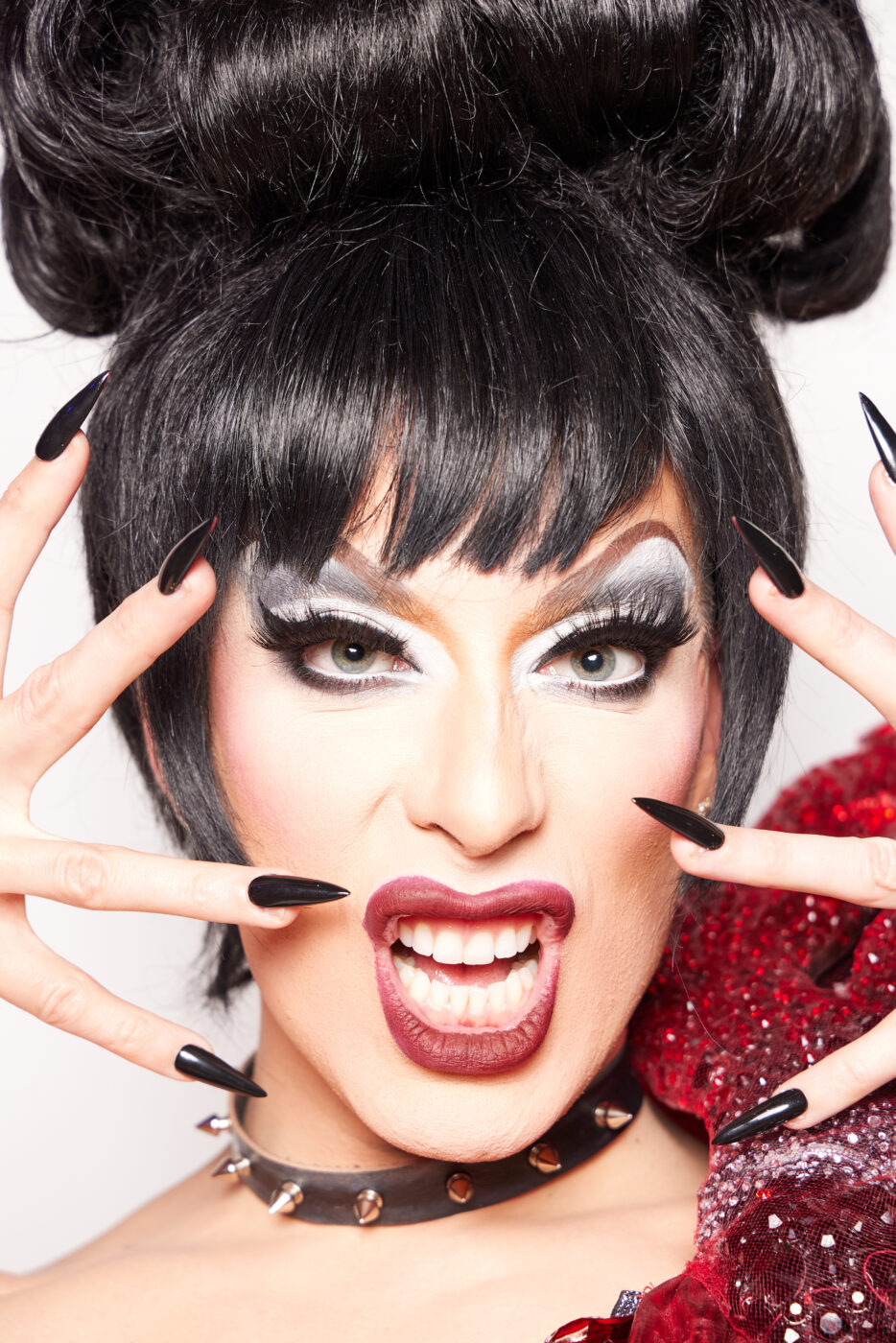
DRAG: The Musical • Photo: Rosenstein.
Coxworth’s character, which is intertwined throughout the play, utilizes wardrobe, wigs and monologues to underscore the importance of performing femininity –even in feminine form. It might seem an oxymoron, but for Alaska a natural part of the narrative. “I believe that drag essentially is celebrating divine femininity and at its core that’s what we’re doing. We’re seeing femininity that is powerful and out there and unapologetic and strong and celebrated and that’s really empowering.”
That mission was accomplished with Dixie. With Brandon. With Kitty. With Alexis. With all the characters that grace the stage and leave the audience a bit more empowered. In just two hours we watch each character navigate bitter moments but manage to overcome them. As the show wraps, the audience erupts in applause. Their energy completes the most surreal part of an already surreal show: people of all stripes united in celebrating the stars and scars of the drag community. Yes, it may just be an off-Broadway show but it’s become a sure-fire way to make Americans come together.

